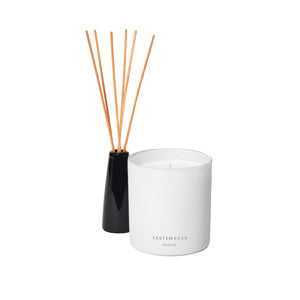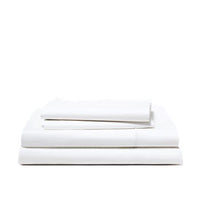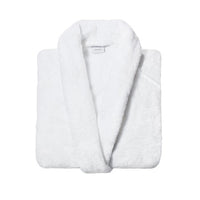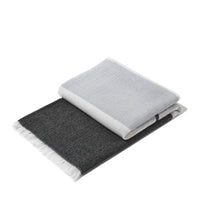 Your bedding is trying to tell you something.
Your bedding is trying to tell you something.
...
Beyond the information you get from laying in it – the weight, the texture, the crispness – there’s a backstory to how it was made. What chemicals was it treated with? What kind of waste did it leave on its way to you? What steps were taken to ensure that it was sustainably made?
...And how on earth are you supposed to find out? Short of a field trip spanning from farms to factories.
Enter Oeko-Tex (that’s echo-tecks, for those reading aloud). The international third party certification devoted to testing and approving textiles for dangerous chemicals. For the last quarter century, they’ve gone above and beyond the legal requirements to ensure that fabrics earning their hard-earned label are at the forefront of safety. Because we made our sheets soft enough that you’ll want to sleep in the nude, we needed to guarantee that doing so would be a first-rate experience for all of your senses. And that meant NO skin-irritating or respiratory-inflaming additives; no one wants to go to bed with Formaldehyde.

THE GOOD
Every single textile we put out, from napkins to bed linens, chef’s towels to bath towels, sateen to percale, is Oeko-Tex certified. Which means we’ve put our products through extensive testing to ensure that the fabrics (and buttons, zippers, threads, etc.) haven’t been unnecessarily treated with harmful chemicals like pesticides and lead.
To us, that means a commitment to bettering not just the product, but everything around it. Because avoiding dangerous chemicals on our textiles means pouring less chemicals into factories and back into the environment.
As for those factories: you’ll find the ones we work with in Portugal, Italy, and right here in the US – places where the standards have always been significantly higher than in certain Asian countries. Places that are as committed to sustainability as we are, with new initiatives like 100% recycled cardboard packaging, or exploring solar energy and zero-emission options.

THE BAD
This stuff is more confusing than you would think. While everyone’s trained to recognize certain labels at the grocery store like USDA organic, the textile world’s sustainability practices aren’t as well-known. For one thing, “organic” doesn’t even offer the kind of protection with textiles that we’re used to with our food. When you bite into an organic apple, you know that the entire fruit has been certified. Meanwhile, an organic cotton blanket means that the raw cotton itself was grown organically, but says nothing about the chemicals it’s been treated with from after it’s bloomed and picked.
What’s more, while there’s an excitement and understanding around how chemically-treated food affects our bodies, there’s been less research into how harmful chemicals on our skin can trigger reactions. It creates an apathy about chemically-treated textiles that the bedding industry tends to take advantage of, especially with labels like “Permanent Press” which mean the product has been treated with a form of formaldehyde to keep it preserved in its unnaturally wrinkle-free state. (Kind of makes you feel like pulling out the iron isn’t so bad.)

THE UGLY
It’s tough to rally around the dangers of these chemicals – even the scariest sounding ones, like asbestos and carcinogens – when they seem to be hiding just about everywhere. Even skimming Oeko-Tex’s spreadsheets of the chemicals they regulate makes you queasy – who knew this stuff was lurking under the surface?
“It’s human nature to turn a blind eye to things that aren’t necessarily in our backyards,” says Tara St. James, who focuses on textile sustainability at her post as production coordinator of Pratt Institute’s Brooklyn Fashion + Design Accelerator. “Because the supply chain is so far removed, we’re not directly seeing all the chemical waste created by factories and being poured into rivers, not seeing the detriment to the health of the workers in these places.”
After all, while there hasn’t been government proof that chemical-laden textiles affect more than a percentage of the population (those who develop contact dermatitis from the stuff), it’s clear that these additives are bad for the environment and factory workers.

WHAT'S NEXT?
Our goal is to get you into more conscious bedscape – but not you alone. Because our end goal is a more sustainable future for you, yours, and the world at large. That’s why, as we weighed the options for the myriad types of fabrics and certifications available, we went after Oeko-Tex. Their approval means leagues more than a standard “organic” mention on the packaging. Because while organic cotton is only a piece of the puzzle, we’re more interested in ensuring that the product in your hands (and on your bed) has gone through testing to ensure that no part of it is harboring harmful additives.
It’s all part of selecting bedding that makes for a cleaner impact – and a better night’s rest.

Read next: our commitment to ethical down.





































